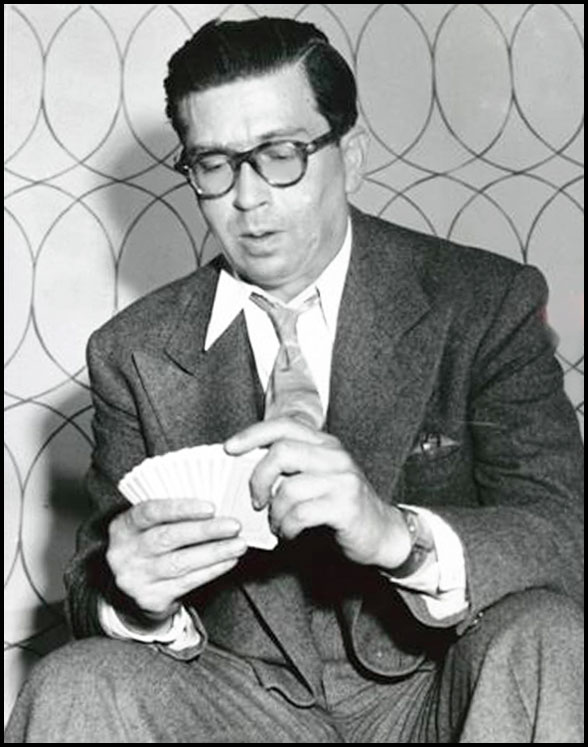 Harry Fishbein
Harry Fishbein
Avoiding an End Play By William E. McKenney
The Pittsburgh Press – 11 Feb 1939
Dangerous End-Plays Are Avoided by Careful Defense Early in Game By WILLIAM E. McKENNEY Secretary of American Contract Bridge League
THE BEST defense sometimes involves only the play to one trick. At other time it requires a long glance into the future to avoid an end play. Harry Fishbein of New York, took a long look ahead to find the correct defense against South’s four-spade contract.
Fishbein (East) thought he had a trick in every suit, and feared that the partnership would be fixed with a bad score if he failed, to double.
E/W vulnerable Dealer South
Opening lead:  4
South won the first trick with the heart ace. East knew that South held no more hearts, since West’s lead was viously from a four card suit. A club was returned and now Fishbein took his look ahead.
He won with the ace and returned the queen of spades, sure that he would need both his hearts as exits to avert a later end play in diamonds. Declarer won and cleared trumps, and Fishbein was in with the jack.
He now led the heart king and the contract was doomed. South could not prevent him from using his remaining heart as an exit, and thus had to concede him two diamonds and go down one. If Fishbein had led a heart instead of the spade queen, declarer would have ruffed and led three rounds of trumps.
East could then exit safely with his last heart, but declarer would ruff again and lead the ten of diamonds, thus end-playing East.
4
South won the first trick with the heart ace. East knew that South held no more hearts, since West’s lead was viously from a four card suit. A club was returned and now Fishbein took his look ahead.
He won with the ace and returned the queen of spades, sure that he would need both his hearts as exits to avert a later end play in diamonds. Declarer won and cleared trumps, and Fishbein was in with the jack.
He now led the heart king and the contract was doomed. South could not prevent him from using his remaining heart as an exit, and thus had to concede him two diamonds and go down one. If Fishbein had led a heart instead of the spade queen, declarer would have ruffed and led three rounds of trumps.
East could then exit safely with his last heart, but declarer would ruff again and lead the ten of diamonds, thus end-playing East.




























